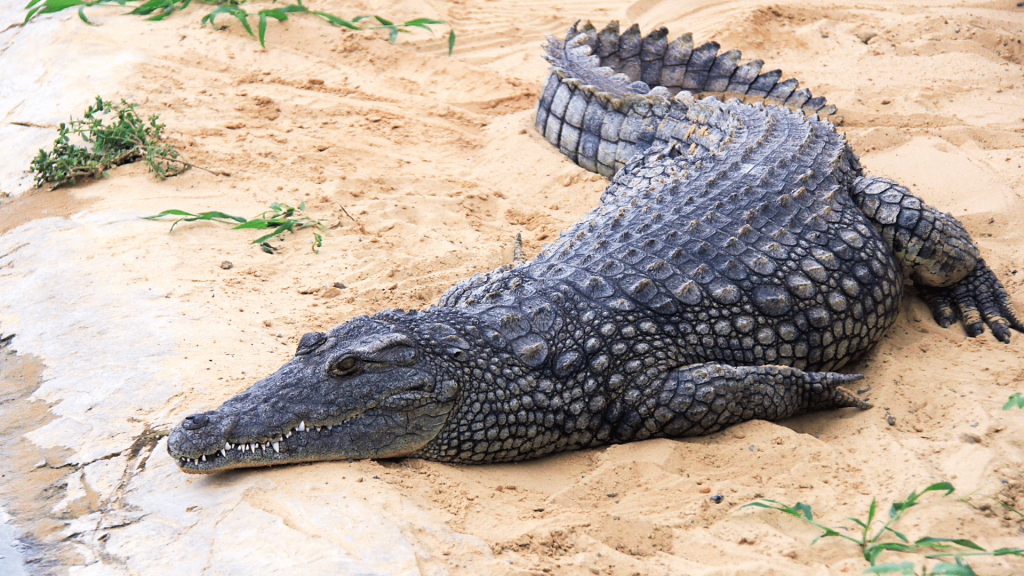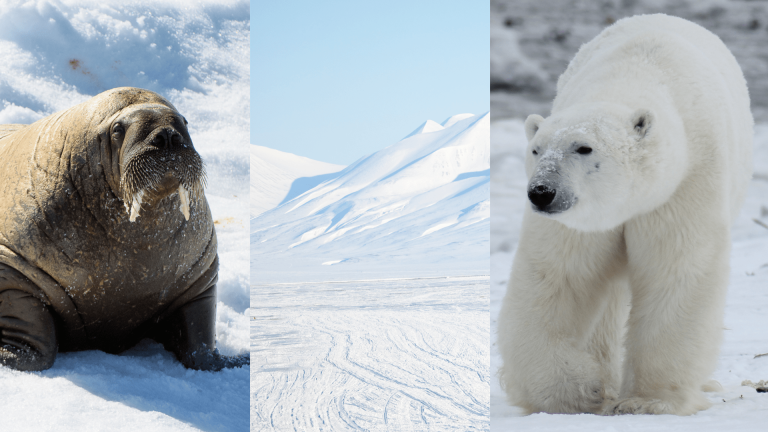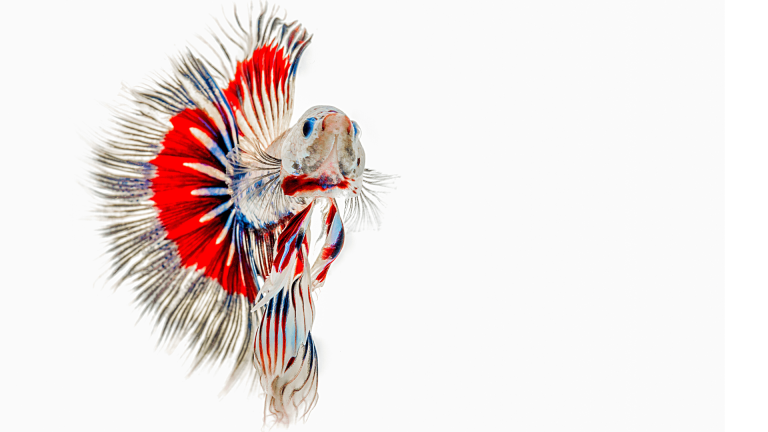Top 10 Most Dangerous Crocodiles
Discover the world’s Most Dangerous Crocodiles in this comprehensive guide. From the stealthy Nile crocodile to the powerful Saltwater crocodile, explore their habitats, behaviors, and the inherent danger they pose. Get ready for a deep dive into the realm of these apex predators

All crocodiles are adept hunters, although not all are aggressive and dangerous. Certain species are more vicious and unrelenting in their attacks.
The Nile crocodile, with a biting power of 3,700 PSI, tops the list of the most lethal crocodiles in the world. It is infamous for its many assaults on people, many of which were fatal.
Let’s examine some other dangerous reptiles and what makes them unique.
Who is the Most Dangerous Crocodile or Alligator ?

Alligators are less harmful than crocodiles since crocodiles are typically more aggressive. Alligators are opportunistic feeders, so they will only usually chase you down if you irritate them. That is not to say that you should swim beside them, though.
Most Dangerous Crocodiles in The World
In descending order, the deadliest crocodiles in the world are
- Nile Crocodiles
- Saltwater Crocodiles
- American Crocodiles
- Mugger Crocodiles
- Black Caimans
- American Alligators
- Gharials
- Cuban Crocodiles
- New Guinea Crocodile
- Siamese Crocodile
Here are Top 10 Most Dangerous Crocodiles
01. Nile Crocodiles

Gaining recognition as the second-strengthiest marine mammal based on bite force (after the great white shark). Killing prey is simple when combined with razor-sharp teeth (64 to 68).
These crocodiles can swim quickly—they may cover 35 kilometers per hour in brief bursts.
Medium-sized to big land animals, fish, and amphibians comprise most of their diet. The primary method of hunting for Nile crocodiles is ambush (when hunting land animals). Sometimes they have to wait for the target to get near enough for hours or even days.
Nile crocodiles pull their prey back into the water when they catch it, where they drown it before consuming it whole. These strong crocodiles can blend in a while hiding thanks to their dark olive to brown skin. Sometimes they even resemble a log of wood.
Crocodiles from the Nile can consume up to half their weight simultaneously. These crocodiles have a voracious appetite but can go months without eating. Because male crocodiles are territorial creatures, they will attack another male who tries to mate with a female there.
02. Saltwater Crocodiles

Scientific Name: Crocodylus porosus
Size: 9 – 20 ft
Weight: 230 – 2900 lbs
Bite Force: 3,700 PSI
Most people agree that the species that presents the most significant risk to people is the saltwater crocodile. As the name suggests, the crocodile species is known to live in saltwater areas and marshes.
Moreover, the Sundaic region of northern Australia, Micronesia, and regions of Southeast Asia are where you can find saltwater crocodiles in the most superior numbers. Due to their propensity to spend most of their lives in saltwater, they are often referred to as “sea crocodiles” or “marine crocodileThe largest living reptile and crocodilian in the world is said to be the saltwater crocodile. Their fantastic ambush abilities allow them to drown and swallow their target entirely.
It’s astonishing to learn that the most powerful bite of any animal alive today belongs to saltwater crocodiles. A single taste can produce up to 16,414 newtons of force, proving that the crocodile is nothing more than a piercing tool.
03. American Crocodiles

Scientific Name: Crocodylus acutus
Size: 11 – 20 ft.
Weight: 400 – 2,000 lbs
Bite Force: 2,980 PSI
American crocodiles can find from Central America to the Caribbean and South American islands along the Atlantic and Pacific coasts. They will, however, more usually reside in Florida’s lowlands and Southern and Central America’s saltwater marshes. One of the species with the largest size is the American crocodile. They weigh up to 1,000 pounds and are typically 11 to 15 feet long.
Yet, adult men can reach a height of 20 feet and a weight of 2,000 pounds. In general, adult females are smaller than adult males.
American crocodiles consume smaller mammals, fish, turtles, frogs, birds, and fish.
Because of their powerful jaws and sharp, jagged, interlocking teeth, these crocodiles can hold onto victims until swallowing them whole. In addition, they have protective eyelids that enhance their night vision, which helps them hunt while underwater.
In recent years, American crocodiles have attacked roughly 18 individuals annually, with about four of those attacks ending in fatalities. They are among the best natural predators and one of the deadliest crocodile species. You must exercise utmost caution if you are close to this beast.
04. Mugger Crocodiles

Scientific Name: Crocodylus palustris
Size: 6 – 10 ft
Weight: 200 – 1540 lbs
Bite Force: 2,500 PSI
The Indian subcontinent and other nations are home to mugger crocodiles, sometimes called marsh or Indu’s crocodiles (Pakistan, Southern Iran, India, Nepal, and Sri Lanka).e
Crocodiles of medium size are muggers. Male mugger crocodiles are usually approximately 10 feet long, while adult females range from 6 to 8 feet.
Huge people can reach 16 feet in length and weigh up to 1,540 pounds.
Also, especially during mating seasons, its adult males are known to be fiercely territorial and violent.
These reptiles have attacked and murdered numerous humans, even if not all death cases brought on by mugger assaults may have to think documented.
Around 30% of the 110 muggings that took place between 2008 and 2013, according to CrocBite, resulted in fatalities.
05. Black Caimans

Scientific Name: Melanosuchus niger
Size: 10 – 20 ft.
Weight: 800 – 1300 lbs
Bite Force: N/A
The largest caiman species in the world is said to be the black variety. A mature adult may reach a height of 13 feet and weigh up to 400 kilograms. In addition, the crocodile, the giant predator in the Amazon basin, is frightening enough at first appearance. They prey on small creatures, including small fish, frogs, and invertebrates, and are formidable predators.
Reports of them attacking large animals like cougars and jaguars, though. Even medium-sized species like deer, tapirs, and significant otters are more likely to be eaten by them.
06. American Alligators

Scientific Name: Alligator mississippiensis
Size: 8.5 – 15 ft.
Weight: 200 – 1200 lbs
Bite Force: 2.980 PSI
American alligators sometimes called “gators,” are found in freshwater ecosystems such as lakes, streams, swamps, marshes, and other wetlands. They are native to the Gulf Coast region of the United States. Nevertheless, some have split into saltier ecosystems like mangrove swamps. Adult male alligators typically reach heights of 13 to 15 feet, making them smaller than their crocodile cousins in most cases (4 and 4.5 meters).In Florida, alligator attacks occurred on average about 11 times each year between 2000 and 2007, but less than 10% of victims died as a result. Wildlife officials recorded 379 alligator assaults on humans between 1948 and 2005, which led to 17 fatalities. They also noticed that, interestingly, most of those incidents didn’t appear to have started with the alligator but with people attempting to handle, pick up, or otherwise manage the animal.
07. Gharials
Scientific Name: Gavialis gangeticus
Size: 13 – 20 ft.
Weight: 350 – 400 lbs
Bite Force: N/A
The gharial, also known as the gavial, lives in the rivers of Nepal and northern India. It can identify by the length of its relatively thin, sharp-toothed jaws, which it sweeps sideways to capture fish, its primary diet. The gharial typically grows between 12 and 15 feet long (3.7 to 4.6 meters). It does not assault people but appears to eat the bodies that float down the Ganges River during funeral rites.
08. Cuban Crocodiles

Scientific Name: Crocodylus rhombifer
Size: 6.9 – 11 ft.
Weight: 180 – 474 lbs
Bite Force: N/A
The Cuban crocodile is a species unique to Cuba, as its name suggests. It inhabits freshwater environments like lakes, rivers, and marshes. A male Cuban crocodile’s average height and weight are 11 feet and 474 pounds. The female, however, is smaller than the male. They can swim at speeds of up to 32 kilometers per hour. They are agile on the ground thanks to their long, powerful limbs with slight webbing.
Cuban crocodiles are carnivores, much like all other species, and eat a variety of creatures. Nonetheless, fish remains their primary source of sustenance.
Cuban crocodiles are pretty aggressive and could be deadly to humans despite their medium size.
Despite their vicious personalities, Cuban crocodile attacks only killed one person—an older adult spearfishing in 1995.
Despite having numerous teeth, these crocodiles avoid taking on large prey (64 to 68). Due to their blunt teeth, Cuban crocodiles may easily break through turtle shells.
09. New Guinea Crocodile

A little species of crocodile that is native to the islands of New Guinea is called the New Guinea crocodile. The crocodile inhabits areas with freshwater lakes and wetlands. The length of an adult can reach up to 10 feet.
The strong teeth of New Guinea crocodiles allow them to immediately crush their victims after capturing them. They typically eat water creatures like frogs, fish, insects, spiders, spider webs, and small mammals. Also, they possess the intelligence to sneak up on their victim. They have a fantastic principle: as soon as the prey catches, they flick its head.
10. Siamese Crocodile

One of the deadliest crocodiles in the world, the siamese is found in Indonesia, Brunei, Myanmar, Laos, Thailand, and Vietnam. The medium-sized crocodile is the “Siamese freshwater crocodile” or the “Singapore small-grain.
A Siamese crocodile can reach a length of 6.9 feet and a weight of 70 kilograms as an adult. The crocodile species pose no significant threat species to people. There have been numerous cases of them attacking people, though. The latest fatal attack occurred in 1928 when a Siamese crocodile struck a youngster for an unknown reason.
Moreover, it says that crocodiles do not attack people. They frequently take on a unique identity as a means of defense. The Siamese crocodiles also employ in crocodile shows that are present worldwide. Also, there have been cases where they have attacked show performers and left them with horrific bruises.
Do Crocodiles Eat Humans?

One of the terrifying aquatic animals is the crocodile. There is good reason to fear them because it says that they are 100 times more hazardous than sharks.
Indeed, crocodiles will attempt to attack and consume humans if given a chance. Because they are more inclined to feed on humans, saltwater and Nile crocodiles are particularly hazardous. A crocodile’s bite is three times more potent than a lion’s, which shows how lethal and dangerous these creatures are.
Why Do Crocodiles Attack Humans?

Crocodiles target humans because it is in their nature to do so. Although not all species harm people, the Nile and saltwater crocodiles are the main culprits. Generally speaking, they are larger than most other species and are less prone to attack a person.
People are at the top of the food chain on land, but when they are close to a crocodile habitat, they are not. People are a common target because crocodiles use them as a food source.
These creatures typically attack humans on both lands and in water. The crocodile’s size will determine whether it can bite off a limb or try to devour the victim whole. Despite their size, crocodiles can move quickly over short distances on land and in water. They can typically outswim a person since they are faster in the water. They use this to assault a person while slowing them down severely.
Crocodiles prey on people by ambushing them, ensuring they catch up in the chase. When hunting in the water, they are stealthy and only pounce when they are sure they can get the kill. Because of this, they are the top predators in their ecosystem.
Why Are Crocodiles So Aggressive?

Apart from their biology, there is no real reason why crocodiles are so hostile and irritable. These reptiles are among the most violent animals globally and are the main predator in their area.
The saltwater crocodile has been named the most violent species among the other seven reptiles in research. Even right after hatching, aggression is, in their essence.
Aggression, on the other hand, helps them survive as adults and defend their territory. Also, their aggressive strikes guarantee that they harm the victim sufficiently to render them immobile so they may feed on them.
Crocodiles are more ferocious than their alligator siblings, so some keep alligators as pets but not crocodiles.
Explains the distinction between the two creatures, members of the same order but separate families. The crocs may live in freshwater or saltwater, although their counterparts prefer saltwater. Therefore they also inhabit diverse settings.
Alligators still pose a threat since they attack both people and other animals and are harmful.
How to Survive a Crocodile Attack?

Crocodiles might quickly attack you if you are swimming or fishing in a lake or river where they are present. Keep going despite how terrifying it may be to view the creature. You can fight out of an ambush and live using the following advice.
Close its Mouth
Besides its weight, a crocodile’s mouth is its most lethal bodily portion. You can, however, close it by wresting your way to its snout. Even though it will require all your might, doing this task will save your life. You can roll some rope or vines on your snout to buy you time to flee or obtain aid if you can find them.
Run in a Straight Line
Because sprinting in a zigzag pattern is a myth, the easiest way to outrun a crocodile is to run straight because it makes you faster. It would help if you tried to outrun the crocodile’s short-distance running speed of 12 to 14 kph.
Poke The Eyes
Crocodiles, especially in water, have keen eyesight. If you can’t close its snout, your best option is to poke its eyes, so you have time to flee. Gouge the crocodile’s eyes with a sharp rock or stick to render it defenseless for a short while.
How to Survive The Deadliest Crocodile Attacks [Video]
Conclusion
And with that, we bring our piece on the world’s most dangerous crocodiles to a close.
Fearsome-looking crocodiles are infamous for attacking and pursuing anything that moves. In the wild, take precautions because these creatures might resemble wood.
Around 1,000 individuals globally every year are killed by crocodilians, according to Wikipedia. Nonetheless, Nile crocodiles are the most dangerous species to people because they are involved in most attacks on people, many of which result in the worst-case circumstances.
Please share this “ Top 10 Most Dangerous Crocodiles ” article with your friends.
Let’s meet on the next article
Until You can read: 10 Ways to Take Care of Your Dog Responsibly
Until You can read: Most Dangerous Birds in The World





